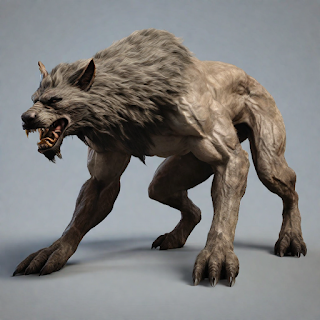Between 1764 and 1767, a mysterious creature terrorized the former French province of Gevaudan, killing over 100 people, mostly women and children. Dubbed the "Beast of Gevaudan," it attacked by biting the throats of its victims. Given its tremendous strength and savagery, it seemed a true monster.
However, when the beast was finally tracked down and killed in 1767, its remains revealed clues to what may have driven its murderous behavior. Analysis showed it was in fact a large gray wolf, far larger than average for the region. Some historians suggest it may have been a gray wolf-dog hybrid.
What compelled this particular wolf to attack humans so viciously? Its size indicates it was likely an outcast from its pack. Without a place among other wolves, it would have struggled to hunt effectively to survive.
The growing human settlements in Gevaudan were shrinking the wolf's natural habitat as well.
Desperate and alone, with less wild prey available, attacking people became this wolf's means to satisfy its hunger. Its rampage was arguably an act driven by the need to eat rather than innate evil. While its actions were monstrous, circumstance and humanity's impacts on the land arguably made the monster.
Here are some ways the lessons from this historical monsters could be applied to RPG monsters:
- Give monsters clear motivations and backstories that explain why they behave as they do. Being injured, hungry, defending territory, etc. rather than just "evil."
- Tie monsters to societal/environmental problems players could uncover and potentially solve. Destroying a toxic mine might cure a cursed dragon.
- Offer non-combat resolutions like negotiation, aid, or addressing root causes. Monsters may parley if the reason for attacks is removed.
- Referees should consider what pushed a monster over the edge, and leave clues for players. Was it recent or a slow escalation of hardships?
- Ecosystems and habitats could shape monster behavior. A desperate remorhaz may attack if its underground realm is collapsing.
- Social abilities allow understanding motives. Insight, animal handling, medicine help discern what made a monster.
- Monsters reacting to player actions could emerge. Clearcutting a forest might breed wrathful treants seeking restitution.
- Morally gray monsters acknowledging hardship or loss can inspire empathy. Players may see them as tragic rather than purely evil.
- Systems that track environmental/social changes let players discover how prior groups impacted areas, creating future threats.
The key is helping players see monsters as products of circumstances beyond their control at times, rather than implacable evils. This enriches campaigns and allows creative non-violent solutions to threats.

Comments
Post a Comment